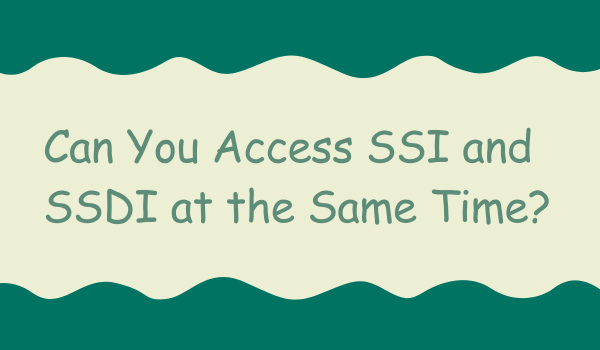In this article, you will get to know about the Can You Access SSI and SSDI at the Same Time? Here’s All You Need to know. Both SSI and SSDI are monthly financial assistance that are delivered to people with disability. The disabled individuals who receive both thee benefits are known as the concurrent benefits.
Can You Access SSI and SSDI at the Same Time?
The recipient receives these payments after certain specifications and eligibility criteria. Both these benefits are granted for mental and physical disability but serve with different eligibility criteria. To know further essential details regarding the Access SSI and SSDI at the same time, what these are, their benefits, and more, continue browsing this article.
Yes, you can access both the SSI and SSDI at the same time. But, while receiving both of these payments, your supplemental security income can have a certain reduction due to the Social Security Disability Insurance, or the individual can be ineligible for it.
|
Important Links |
The SSI and SSDI are disability payments but have different eligibility criteria. The SSI is the Federal Government tax-free payment that is received by every individual who has a mental or physical disability. However, the SSDI is delivered on the basis of your qualifying criteria and your working history. To have the benefits of SSDI, the recipient is required to contribute while working.
What is SSI and SSDI?
The SSI and SSDI are disability programs that deliver monthly financial aid to the disabled. Supplemental Security Income is a federal benefits program for individuals with disabilities and limited income and resources. This program is administrated by Social Security which is granted to disabled children, adults, blind individuals, and people over the age of 65 or older.

Social Security Disability Insurance is also a federal program that offers financial assistance to an individual with disability. This program payroll is made according to the tax-funded by the federal government. The individual receives the SSDI on the baes of social security taxes on earnings. SSDI grants are granted to those who do not have a partial disability. With SSDI, the payment is also made to the beneficiary’s family.
Eligibility to Access SSI and SSDI
The SSDI and SSI both of these are disability benefits, but they have some major differences in their eligibility criteria, including:
To receive the SSI, you must meet all these criteria, which include
- Be a physically or mentally disabled, blind age 65 years.
- Having a certain specific income and resources.
- Required to be a US citizen or permitted with an alien meeting that includes certain additional requirements.
- Depends on your marital status and income resources.
- Lives in one of the 50 states.
To receive the SSDI, you must meet the eligibility criteria, which contain the following:
- Required to be 18 to 64 years old.
- Having a proper qualifying working history.
- Permanently disabled and unable to work due to medical issues
- Required to be younger than the retirement age
- Not having a short-term disability
- Medical conditions need to be met with the SSA.
These are the eligibility criteria for having the SSDI. The individual can receive both benefits together if they come under both eligibility criteria.
|
Important Links |
Here’s All You Need to know
The recipient can have the SSI and SSDI at the same time. There is no problem in receiving this payment. SSDI is provided to only those who make a certain contribution at the time of working, and SSI is a federal grant that is delivered to disabled individuals who can’t work for a living. The easiest way to enroll for both benefits is to fill out the online application form and submit it to the leading authorities.
Both payments deliver different rates of monthly payments according to disability. The Federal Government delivers this sum on the basis of your and your family’s annual income and living situation. The beneficiaries receive the SSI payment of 914 USD for individuals and 1371 USD for couples. Along with this, the SSDI delivers a monthly payment between the sum of 800 USD and 1800 USD., which depends on your contribution.